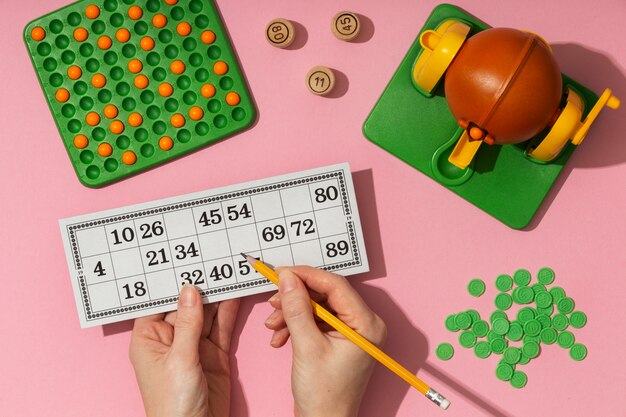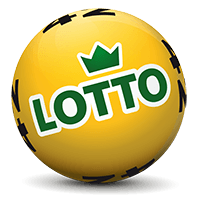
The lottery is often viewed as a game of pure luck, but behind the seemingly random process lies a complex mathematical foundation. Understanding the odds of winning a lottery can offer valuable insight into the probability of success in various types of games, and help players make more informed decisions. While the dream of winning a massive jackpot is alluring, the reality is that the odds are typically stacked against participants. To grasp why, it’s important to delve into the math behind the lottery.
At the heart of lottery games is the concept of probability, which helps quantify the chances of a particular outcome occurring. Whether it’s selecting the correct numbers from a set or understanding how combinations work, the odds are determined by well-established mathematical principles. While the formulas might seem intimidating at first, they’re relatively straightforward when broken down step by step. This article will explore how the math of probability applies to lottery games, and how you can calculate your odds of winning.
Beyond just the basic calculation of odds, there are also misconceptions about how the lottery works. Many players rely on strategies that have no real mathematical basis, such as picking numbers that haven’t appeared recently or using ‘lucky’ numbers. Understanding the true nature of randomness and the role it plays in lotteries can help dispel some of these myths. By examining the math behind the lottery, you can see that while winning is always possible, the chances are often much slimmer than they may appear.
Math Behind the Lottery: Understanding the Odds
The lottery is often seen as a game of luck, but behind the excitement lies a world of mathematics that dictates the odds of winning. Understanding these odds can help demystify the game and provide insight into why winning the jackpot is such a rare event. By examining the combinations and probabilities, we can better appreciate the structure of the lottery.
Lottery games typically involve choosing a set of numbers from a larger pool, and the probability of winning is based on the number of possible combinations. While the odds might seem overwhelming, the math involved is relatively straightforward. With some basic probability theory, we can calculate the chances of hitting the jackpot or winning smaller prizes.
How Lottery Odds Are Calculated
To calculate the odds of winning a lottery, one must understand the concept of combinations. The formula for combinations is expressed as:
nCr = n! / (r!(n-r)!)
Here, n represents the total number of possible numbers, and r is the number of numbers you need to choose. The exclamation point represents a factorial, meaning the product of all positive integers up to that number. This formula gives the total number of possible combinations, which is the denominator in calculating the odds.
For example, in a lottery where you must choose 6 numbers from a pool of 49, the total number of possible combinations is:
- n = 49
- r = 6
The total number of combinations would be:
49C6 = 49! / (6!(49-6)!) = 13,983,816
This means the odds of choosing the correct 6 numbers in this lottery are 1 in 13,983,816.
Comparing Different Lottery Odds
The odds can vary significantly between different lotteries depending on the pool size and the number of choices. For example:
| Lottery Type | Number Pool | Numbers to Choose | Odds of Winning |
|---|---|---|---|
| 6/49 Lottery | 49 | 6 | 1 in 13,983,816 |
| 5/50 Lottery | 50 | 5 | 1 in 2,118,760 |
| Powerball | 69 + 26 | 5 + 1 | 1 in 292,201,338 |
As seen in the table, the larger the number pool and the more numbers you need to select, the lower the odds of winning. This is why jackpot winners are so rare, especially in larger lotteries like Powerball.
How Lottery Odds Are Calculated: A Breakdown of the Formula
The lottery is often seen as a game of pure chance, and understanding the odds behind winning can provide a more realistic perspective. The calculation of lottery odds involves combinatorics, a branch of mathematics that deals with counting and combinations. For any given lottery, the odds are derived based on the number of possible combinations that can be drawn from a set of numbers.
To calculate the odds of winning, it’s important to understand the specific structure of the lottery game. For example, in a typical lottery where players choose 6 numbers from a pool of 49, the total number of possible combinations is calculated using a formula that accounts for all possible ways to select a subset of numbers.
The Formula for Lottery Odds
The basic formula used to calculate the odds of winning a lottery is based on the combination formula, often written as:
C(n, k) = n! / (k!(n – k)!)Where:
- n is the total number of available numbers in the lottery pool (e.g., 49).
- k is the number of numbers a player selects (e.g., 6).
- n! denotes the factorial of n, which is the product of all positive integers up to n.
This formula calculates the total number of ways to choose k numbers from a pool of n numbers without regard to the order in which the numbers are selected.
An Example of Calculating Lottery Odds
To illustrate, let’s calculate the odds of winning a lottery where you must select 6 numbers out of 49. Using the combination formula:
C(49, 6) = 49! / (6!(49 – 6)!) = 49! / (6! * 43!)This simplifies to:
- C(49, 6) = (49 × 48 × 47 × 46 × 45 × 44) / (6 × 5 × 4 × 3 × 2 × 1)
The result will give you the total number of possible combinations, which can then be used to determine the odds. For example, if the result is 13,983,816 possible combinations, the odds of winning would be 1 in 13,983,816.
Why Winning the Lottery Is So Rare: The Probability Explained
The dream of winning the lottery is shared by millions, but the reality is that the odds are overwhelmingly stacked against the player. While the idea of instant wealth is enticing, understanding the math behind lottery odds helps explain why winning is such a rare occurrence.
Lottery systems, especially popular games like Powerball or Mega Millions, rely on random combinations of numbers. The total number of possible combinations is what determines the odds, and in most cases, these odds are astronomically low, making the chances of hitting the jackpot incredibly slim.
The Basics of Lottery Probability
In a typical lottery game, players choose a set of numbers from a defined range, and the winning combination is drawn randomly. The probability of winning is determined by calculating the total number of possible combinations, and then figuring out the chance of picking the exact correct combination.
Example:
- In a 6/49 lottery (where a player chooses 6 numbers from a pool of 49), the total number of combinations can be calculated using the combination formula.
- The formula is: C(n, k) = n! / (k!(n-k)!) where n is the total number of options (49), and k is the number of choices (6).
- This results in 13,983,816 possible combinations.
Thus, the probability of winning by picking the correct six numbers is 1 in 13,983,816.
Why Such Low Odds?
The large number of combinations in most lottery systems is the primary reason why winning is so rare. As lotteries increase the number of possible choices (e.g., more numbers to choose from or additional bonus numbers), the odds of winning decrease even further. Additionally, most lotteries are designed to have low odds in order to maintain their profitability and to encourage more players to participate over time, increasing the size of jackpots.
In conclusion, while the allure of winning the lottery remains strong, the mathematical odds remind us why such victories are exceedingly rare events.
Improving Your Chances: Do Lottery Strategies Really Work?
When it comes to lotteries, the allure of winning big often leads people to explore various strategies in an attempt to improve their odds. From choosing certain numbers to participating in lottery pools, these strategies reflect a common desire to gain an edge in what is essentially a game of chance. However, it’s crucial to understand the limitations of these methods and the math behind them to make informed decisions.
In reality, while some strategies can enhance your experience and potentially increase your chances of winning smaller prizes, they cannot change the fundamental odds of the lottery. The odds are determined by the number of possible combinations, and no strategy can alter these probabilities. Instead, these approaches focus on optimizing your play or making it more enjoyable.
Key Strategies and Their Effectiveness
- Choosing Popular Numbers: Many people select numbers based on personal significance or common patterns. While this doesn’t improve your odds of winning, it can impact the share of the jackpot if you do win. If you pick numbers that are less commonly chosen, you might avoid splitting the prize with others.
- Playing Consistently: Regularly buying tickets does not increase your odds per ticket, but it does increase the number of tickets you hold. This means you have more opportunities to win, albeit still at the same odds for each ticket.
- Joining Lottery Pools: By pooling resources with others, you can buy more tickets and cover more number combinations. This strategy increases your group’s chances of winning, though any prize won will be shared among all members of the pool.
- Using Random Numbers: Using random number generators or quick picks can be as effective as picking numbers yourself. Randomly chosen numbers are no more or less likely to win than those chosen based on a pattern.
Ultimately, while some strategies can enhance your overall lottery experience or impact the distribution of winnings, they cannot change the fundamental odds of winning a lottery. The best approach is to play responsibly and remember that lottery games are designed to be a form of entertainment rather than a reliable method for financial gain.
Understanding these nuances helps set realistic expectations and ensures that you approach lottery games with the right mindset. After all, the thrill of the game is part of the fun, but it’s crucial to balance excitement with a clear understanding of the odds.
